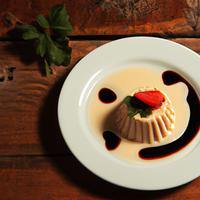
1 serving (150 grams) contains 300 calories, 5.0 grams of protein, 20.0 grams of fat, and 25.0 grams of carbohydrates.

Log this food in SnapCalorie

Nutrition Information
Calories |
473.2 | ||
|---|---|---|---|
% Daily Value* |
|||
| Total Fat | 31.5 g | 40% | |
| Saturated Fat | 18.9 g | 94% | |
| Polyunsaturated Fat | 0 g | ||
| Cholesterol | 78.9 mg | 26% | |
| Sodium | 78.9 mg | 3% | |
| Total Carbohydrates | 39.4 g | 14% | |
| Dietary Fiber | 0 g | 0% | |
| Sugars | 31.5 g | ||
| protein | 7.9 g | 15% | |
| Vitamin D | 31.5 mcg | 157% | |
| Calcium | 157.7 mg | 12% | |
| Iron | 0.3 mg | 1% | |
| Potassium | 236.6 mg | 5% | |
* Percent Daily Values are based on a 2,000 calorie diet. Your daily values may be higher or lower depending on your calorie needs.
Food Attributes
Source of Calories
About Pannacotta
Panna cotta is a creamy Italian dessert traditionally made by simmering cream, sugar, and gelatin, which is then set to chill until firm. Originating from northern Italy, its name translates to "cooked cream," reflecting its simple yet indulgent nature. While classic recipes use heavy cream, modern versions sometimes incorporate milk or yogurt to lighten the texture and reduce fat content. Panna cotta is often flavored with vanilla, fruits, or coffee and served with toppings like berry coulis, caramel, or chocolate sauce. Nutritionally, its high cream and sugar content make it calorie-dense, with limited protein and essential nutrients. However, its gelatin base provides collagen, which may support joint and skin health. Moderation is key, as this elegant dessert is best enjoyed as an occasional treat within a balanced diet.



